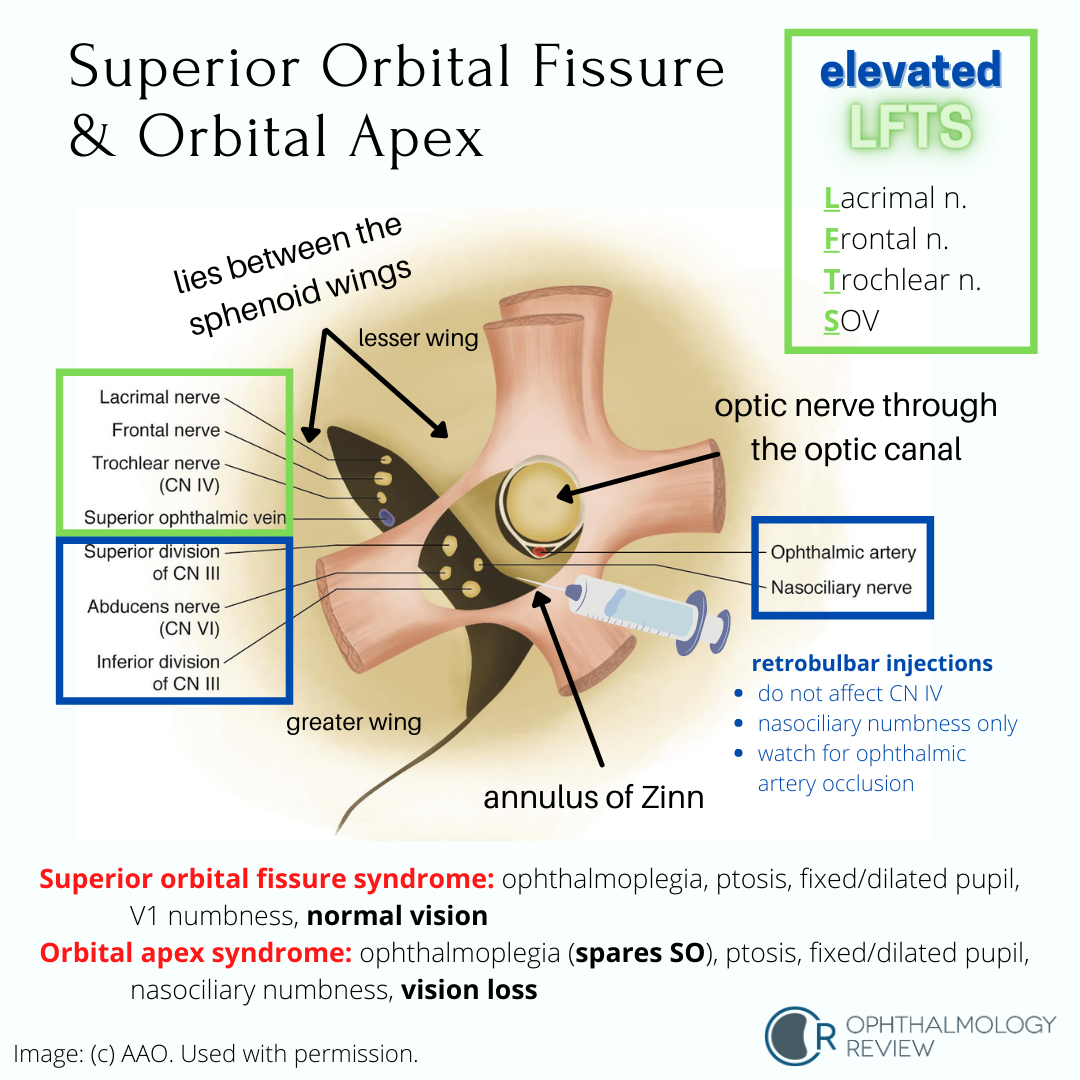Superior Orbital Fissure and Orbital Apex
Oculoplastics Study Guide
I just released a new study guide for oculoplastics (orbit, eyelids, and lacrimal system) as part of my plan to format and release my notes from residency. It's been a slow process, but depending on the feedback and response I'll work on releasing study guides for other subjects within Ophthalmology!
Lacrimal Gland Tumors
To be honest, I wasn't completely sure whether to categorize this topic under oculoplastics or ophthalmic pathology. Arguments definitely could be made for either, or both.
In any case, there are 3 major tumors that affect the lacrimal gland: orbital lymphoma, pleomorphic adenoma of the lacrimal gland, and adenoid cystic carcinoma of the lacrimal gland. If you see a test question about a tumor of the lacrimal gland, it is going to be one of those three conditions (probably).
Orbital And Eyelid Anatomy
I'm going to shift gears a little bit and start reviews on some of the other sections. I originally had planned to go in order of the BCSC sections and follow the OKAP content outline, but I realized that of all the sections to cover, General Medicine is one of the smallest sections in terms of content to know. So while I will likely get back to it sometime in the future, I wanted to make sure the key subjects were discussed prior to the test.
There are many facts in the Fundamentals and Principles of Ophthalmology section of the BCSC that will likely be tested as quick recall. I promise, I will eventually provide numerous resources and tools to help remember these facts; for this article, I will try to cover the most important concepts. I am intentionally leaving out details that may be more challenging to test (meaning I have a hard time coming up with a practice question about it).
Orbital Roof
The orbital roof separates the orbit from the anterior cranial fossa, which houses the frontal lobes of the brain. There are several structures and features regarding the orbital roof that we need to remember. While this article will try to list most of the important features of the orbital roof, it is by no means comprehensive.
Orbital Bones
Orbital Dimensions
Whitnall's Tubercle
The lateral orbital tubercle, or Whitnall's tubercle, is found on the zygomatic bone. According to the Basic and Clinical Science Course, it is typically around 11 mm inferior to the frontozygomatic suture (the junction between the frontal bone and zygomatic bone) (1), and sits 4-5 mm posterior to the lateral orbital rim around the midline (2).
Reading the BCSC: Fundamentals and Principles of Ophthalmology, Chapter 1
The BCSC Section 2, Fundamentals and Principles of Ophthalmology, provides an extremely detailed overview of the anatomy and physiology of the eye. Organizationally, it lays out the “fundamentals” of learning about the eye so that by the end of reading this book, you should be able to understand the anatomical structure of the eye, eye genetics, embryology, growth, and development, physiology of the eye, and medications that are used to treat eye conditions.
For this reason, this book is typically suggested as the first book to read for first-year ophthalmology residents. Please see the articles Reading The BCSC and OKAPs Reading Schedule to learn how to pace yourself through learning the material.


